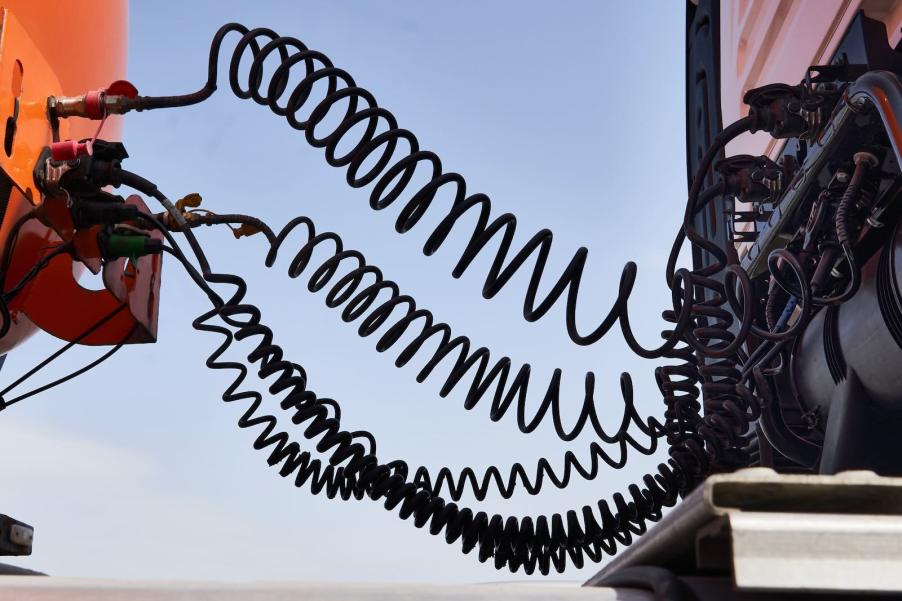
Why do semi trucks have all those hoses connecting the cab and trailer?
So you were passing a semi truck the other day and glanced into the space between the truck cab and semi trailer and noticed something odd: A tangle of hoses connecting the two vehicles. No, they aren’t there because the gas tanks are in the trailer or because the livestock in back needs air conditioning. Besides an electric cable to operate the trailer’s signal lights, the hoses are to carry compressed air between the cab and trailer. Why air? Because a semi truck’s braking system carries compressed air.
First and foremost: The electric power cable between a tractor truck and its semi trailer is not unique to big rigs. Have you ever driven behind a pickup truck with a big trailer and noticed signal lights at the rear of the trailer? If so, they should light up every time the driver taps the brakes or uses a turn signal indicator. Why? So traffic behind the trailer knows what the driver is planning to do.
Semi truck setups are no different. The green line between the cab and the trailer is a power cable. Whenever the truck driver hooks up to a new trailer, they connect this line so the trailer lights come on in sync with their truck’s lights. But that’s not the only line between the truck and trailer.
A semi truck tractor has an air compression system. This is similar to the air compressor an auto shop would use to inflate your tires. But instead of the 30 PSI your tires run at, this system is compressed to 100+ pounds per square inch. When a semi truck driver taps the brakes, it isn’t hydraulic brake fluid running through hoses that activates the system–like in a car. It is instead compressed air running through hoses to carry enough force to the brakes at each wheel of the truck. And if it’s hooked up to a trailer, it carries this force to the brakes at the wheels of the trailer.

Why does a semi truck and trailer need so much force to stop? Because when fully loaded a big rig can weigh 80,000 pounds.
So what may look like a tangle of hoses between a semi truck and its trailer are actually a well-ordered system, standardized between all trucks so drivers can hook up to any trailer in the country. It includes one or two blue high pressure air lines to activate the trailer’s regular service brake. It also includes one or two red air lines for the trailer’s emergency brake. Finally it includes the green line I already mentioned, for the trailer’s lights.
What about “powered” semi truck trailers, like the refrigerated ones to carry produce? These trailers–traditionally called “reefer trailers”–have a powerful refrigeration unit. To power this unit they have their own generators–and their own gas tanks. It’s important they are standalone systems so a truck driver can trade off trailers, or park them at a loading dock and leave to pick up another load.



